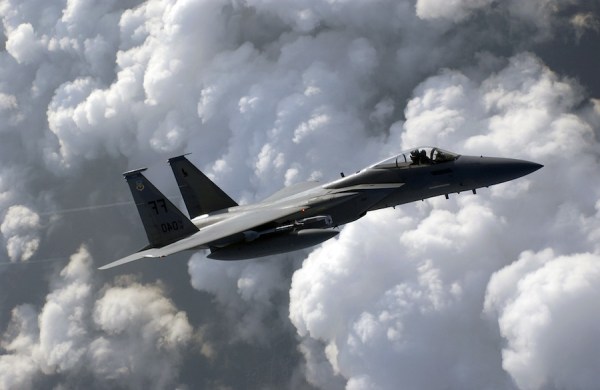China’s unilateral imposition of its East China Sea Air Defense Identification Zone (ADIZ) has triggered fear of mistakes that could lead to war with neighboring Japan — and pull the U.S. in as Tokyo’s ally.
Who started all this air-defense zoning, anyway?
It’s worth noting that such zones aren’t, like paper, gunpowder and printing, a Chinese creation. Beijing’s Nov. 23 declaration of its East Asian zone was its first ever, according to Peter Dutton, an air-defense-identification-zone expert at the U.S. Naval War College. In contrast, the U.S. has had such zones dating back to World War II.
Vice President Joseph Biden arrived on Wednesday in Beijing, where the zone didn’t come up in public comments from him or Chinese President Xi Jinping. But Defense Secretary Chuck Hagel said the continuing tug-of-war over the South and East China seas is a “combustible” issue that China’s declaration didn’t help. “It’s not that the ADIZ itself is new or unique,” he said on Wednesday. “The biggest concern that we have is how it was done so unilaterally and so immediately without any consultation. That’s not a wise course of action to take for any country.”
So what’s behind China’s claim — and how does it differ from those asserted by the U.S. and nearly two dozen other nations?
Beijing’s move is a ploy to assert creeping sovereignty over the small group of islands known as the Senkaku in Japan, which currently administers the islands, and the Diaoyu in China. Totaling a scant 688 hectares, they’re wedged among those two nations and Taiwan.
China declared that all commercial and military flights into its first-ever ADIZ must provide Beijing with its flight plans and be on standby to communicate with Chinese authorities while inside the zone. Failure to comply could result in unspecified, but probably not very pleasant, “defense emergency measures.” While the Pentagon responded by dispatching a pair of B-52s into the zone without telling China beforehand two days after the Chinese demand, the State Department told U.S. commercial airlines on Friday that they should comply with Beijing’s request.
But there are some key differences:

An Air Force F-15, outfitted with AIM-9 Sidewinder missiles, patrols the eastern coast of the U.S.
— China’s zone overlaps an older zone claimed by Japan. That is not a diplomatic way of inflating one’s sphere of influence. Japan and South Korea have told their national airlines not to go along with China’s demand.
— China’s requirement that flights passing through the zone provide Beijing with notice of such flights, even if their ultimate destination is not China, is unusual. The U.S. generally doesn’t require such notice for aircraft simply flying through the zone en route to elsewhere, according to a Federal Aviation Administration official (although they must carry a working transponder, identifying themselves and their location). “It wasn’t the declaration of the ADIZ that actually was destabilizing,” Army General Martin Dempsey, Chairman of the Joint Chiefs of Staff, said on Wednesday. “It was their assertion that they would cause all aircraft entering the ADIZ to report, regardless of whether they were intending to enter into the sovereign airspace of China. And that is destabilizing.”
— The U.S. is an island nation, and has air-defense identification zones along its coasts. It is surrounded largely by international waters, and not by sovereign states that control the airspace above them. Given that, it made sense that the U.S. declared such zones — unilaterally, to be sure, just like China — several times during the Cold War when concerns of a Soviet bomber attack were high. Much ADIZ enforcement is done by the North American Aerospace Defense Command, a joint U.S.-Canadian military organization.
It’s obvious why Foggy Bottom’s pinstripes want U.S. airlines to comply with China’s demands. “Better safe than sorry,” is their motto. They well recall the nightmare of wayward Korean Air Flight 007.
“It [came] from the ocean without identification,” a Soviet air-force general radioed his boss on Sept. 1, 1983. “I am giving the order to attack if it crosses the state border.”
A short time later, a Soviet Su-17 fighter shot down KAL 007, killing all 269 aboard, including U.S. Representative Larry McDonald, a Democrat from Georgia.
The only downside to the State Department’s decision that U.S. airlines bow to China’s demand is that it strengthens China’s claim to the airspace involved and, by inference, to the islands below.
U.S. officials insist that complying with the Chinese directive doesn’t compromise the status quo. But that’s more wishful-thinking rationalization than realpolitik.

